Peatlands are the climate bomb waiting to explode
The destruction of peatlands can cause billions of tons of carbon to be released into the atmosphere, worsening the already intensifying climate crisis
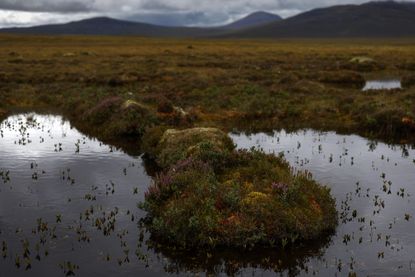

The number and intensity of wildfires have increased due to climate change and are only expected to worsen over time. Along with ruining air quality and causing destruction, wildfires also play a part in worsening climate change in general. This is because the burning damages peatlands and permafrost peatlands, which could have catastrophic outcomes.
What are peatlands?
Peatlands are "terrestrial wetland ecosystems in which waterlogged conditions prevent plant material from fully decomposing," per the International Peatland Society. They are located on every continent and climate and because they are made up of organic matter have trapped lots of carbon dioxide. Many peatlands have been frozen over thousands of years in permafrost with "nearly 20% of the permafrost areas, store[ing] nearly 50% of soil carbon of the permafrost ecosystem, equal to nearly 10% of the global terrestrial soil carbon pool," according to Phys.org.
"Peatlands are one of the world's largest terrestrial carbon stores, because they've been taking in carbon for thousands and thousands of years and storing it there," Lorna Harris, of the Wildlife Conservation Society of Canada, told CBC. Frozen peatlands in particular are holding on to almost 40 billion tons of carbon within them, which is a ticking time bomb of emissions due to climate change, according to ScienceDaily.
Subscribe to The Week
Escape your echo chamber. Get the facts behind the news, plus analysis from multiple perspectives.

Sign up for The Week's Free Newsletters
From our morning news briefing to a weekly Good News Newsletter, get the best of The Week delivered directly to your inbox.
From our morning news briefing to a weekly Good News Newsletter, get the best of The Week delivered directly to your inbox.
How are they in danger?
Climate change has put permafrost peatlands in danger as the temperature rises and wildfires become more prevalent. Humans have also been draining peatland to convert for agricultural or forestry purposes. "When El Niño brings dry weather to the region, fires in the region can go out of control for several weeks or more, with lots of peat burning," Loretta Mickley, a wildfire expert, told The Harvard Gazette.
The warmer temperatures have also caused "zombie fires," which are underground fires that "don't die easily," according to The Conversation. These fires "do not flame but burn more slowly and have the tendency to spread deep into the ground and spread laterally." The Arctic is also warming at an accelerated rate compared to the rest of the world, and as the fires move northward, "peat soils rich in dead plant material burn at an accelerated rate."
"The burning peat also removes the layer insulating permafrost, the region's frozen carbon-rich soil," The Conversation continued. Both permafrost and peatland are becoming increasingly vulnerable to wildfires. "The chemical stability of permafrost peatlands carbon pool have closely related to the environmental disturbance factors," remarked Dr. Gao Chuanyu, the co-author of a 2023 study on how climate disturbances impact the stability of peatland carbon pools, told Phys.org.
What happens if they are destroyed?
The destruction of peatlands can cause billions of tons of carbon to be released into the atmosphere, worsening the already intensifying climate crisis. Also, "fires can thaw permafrost, beginning a cascade of microbial processes that may also generate greenhouse gases. The biggest problem is "that carbon will take at least another 1,000 years to go back into the peat," Mickley explained.
"So you get the carbon loss from the fire and you get the carbon lost from the permafrost thaw and then a more rapid change in the land cover," Harris remarked. "If we don't restore that ecosystem to at least make it carbon neutral and ideally make it a carbon sink again, it is a source of greenhouse gas emissions to the atmosphere."
Create an account with the same email registered to your subscription to unlock access.
Sign up for Today's Best Articles in your inbox
A free daily email with the biggest news stories of the day – and the best features from TheWeek.com
Devika Rao has worked as a staff writer at The Week since 2022, covering science, the environment, climate and business. She previously worked as a policy associate for a nonprofit organization advocating for environmental action from a business perspective.
-
 What are the lessons from Ukraine's Russia incursion?
What are the lessons from Ukraine's Russia incursion?Talking Points And what do they mean for Putin's red lines?
By Joel Mathis, The Week US Published
-
 Harris claims steadfast values in CNN interview
Harris claims steadfast values in CNN interviewSpeed Read This was Harris' first major television interview since she became the Democratic presidential nominee
By Peter Weber, The Week US Published
-
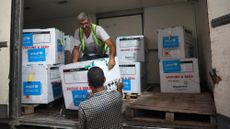 Israel, UN agree to Gaza pauses for polio vaccinations
Israel, UN agree to Gaza pauses for polio vaccinationsSpeed Read Gaza's first case of polio in 25 years was confirmed last week in a 10-month-old boy who is now partially paralyzed
By Rafi Schwartz, The Week US Published
-
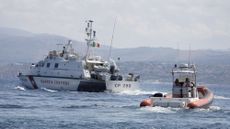 Is dangerous weather in the Mediterranean Sea the new normal?
Is dangerous weather in the Mediterranean Sea the new normal?Today's Big Question A waterspout, or sea tornado, recently sank a superyacht off the coast of Sicily
By Justin Klawans, The Week US Published
-
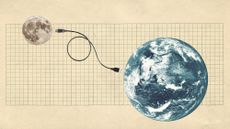 The moon may be the ideal place to preserve Earth's biodiversity
The moon may be the ideal place to preserve Earth's biodiversityunder the radar A cache in a crater
By Devika Rao, The Week US Published
-
 What is NASA working on?
What is NASA working on?In Depth A running list of the space agency's most exciting developments
By Devika Rao, The Week US Published
-
 Life on Earth just (maybe) got older than everyone decided it was
Life on Earth just (maybe) got older than everyone decided it wasUnder the radar Fossil records from western Africa show unexpected findings
By Devika Rao, The Week US Published
-
 Production of 'dark' oxygen deep in the ocean comes to light
Production of 'dark' oxygen deep in the ocean comes to lightUnder the radar The sea is full of se(a)crets
By Devika Rao, The Week US Published
-
 4 tips to make your home more eco-friendly
4 tips to make your home more eco-friendlyThe Week Recommends You don't have to spend a bunch of money to make more sustainable choices
By Theara Coleman, The Week US Published
-
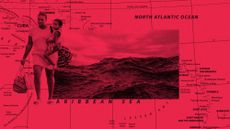 Is Hurricane Beryl the sign of another dangerous storm season?
Is Hurricane Beryl the sign of another dangerous storm season?Today's Big Question Climate change is fueling the frequency and intensity of storms
By Joel Mathis, The Week US Published
-
 Extreme weather events in the last year
Extreme weather events in the last yearIn Depth These events are becoming more common thanks to climate change, and are "affecting every corner of the world"
By Devika Rao, The Week US Published